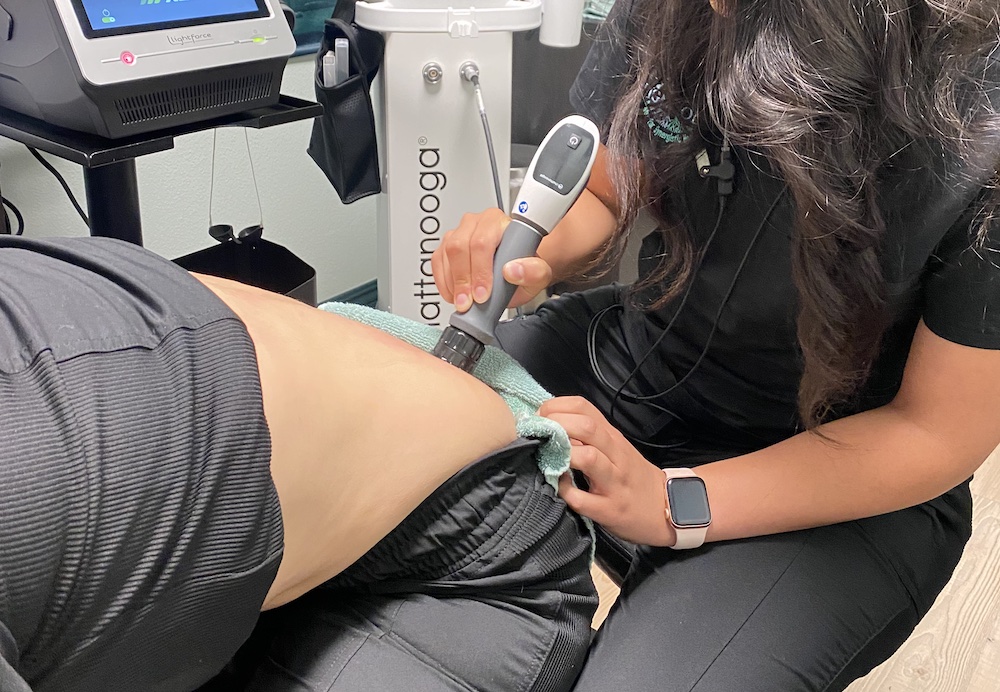As a local chiropractor, I understand how challenging neck injuries can be. Many patients I see are often unfamiliar with the gentle techniques that can effectively alleviate discomfort and promote healing. One of the first steps I recommend is incorporating simple stretching exercises into your daily routine. These exercises can help relieve tension and enhance your neck's flexibility.
Additionally, alternating heat and cold therapy can be incredibly beneficial. Heat can help relax tight muscles, while cold can reduce inflammation and numb sharp pain. These are just a few of the gentle strategies that can significantly influence your recovery journey.
If you're interested, I would love to share more natural healing techniques that can further assist you in alleviating discomfort. Together, we can work towards restoring your neck health and improving your overall well-being.
Gentle Stretching Exercises
As a chiropractor, I want to emphasize the significance of gentle stretching exercises in managing neck pain and enhancing flexibility. By incorporating these stretches into your daily routine, you can effectively reduce tension, improve your range of motion, and prevent future injuries.
It's essential to approach these exercises mindfully to avoid any strain.
Let's begin with a simple yet effective technique: neck rolls. Whether you're sitting or standing comfortably, allow your head to drop forward. Slowly roll your head in a circular motion, transitioning from your chest to one shoulder, then to the back, and finally to the other shoulder. Complete this motion for about 30 seconds in each direction.
This exercise is beneficial for loosening tight muscles and promoting healthy blood circulation in the neck area.
Next, I recommend trying lateral neck stretches. Sit up straight and gently place your right hand on the left side of your head. With care, pull your head towards your right shoulder, holding this position for 15-30 seconds. You should feel a gentle stretch on the left side of your neck.
Afterward, repeat on the opposite side. This stretch effectively targets the sternocleidomastoid and trapezius muscles, which often hold tension.
Another valuable exercise is the chin tuck. While sitting or standing with a straight spine, gently tuck your chin toward your chest, creating a double chin effect. Hold this position for about 5 seconds before releasing.
This exercise not only strengthens the neck muscles but also contributes to better posture.
By integrating these gentle stretches into your daily life, you can take an active role in managing neck pain and enhancing your overall well-being. Always remember to listen to your body – it's crucial not to push yourself too hard.
As your chiropractor, I encourage you to consider these stretches as part of a holistic approach to your health.
Heat and Cold Therapy
As a local chiropractor, I want to share with you the importance of heat and cold therapy when managing neck injuries. These two methods are powerful tools in providing relief, each serving distinct purposes. Understanding when and how to utilize them can make a significant difference in your recovery.
Cold therapy is particularly effective in the initial stages of an injury, especially if you're dealing with swelling or inflammation. Applying a cold pack to the affected area for about 15-20 minutes can numb the pain and help reduce swelling. Just remember to wrap the ice in a cloth or towel to protect your skin from frostbite.
I recommend repeating this process every few hours during the first 48 hours after the injury.
Once the swelling has diminished, heat therapy can become your best friend. Heat is great for relaxing and loosening the tissues, improving blood circulation, and promoting healing. You can use a warm towel, a heating pad, or even enjoy a warm shower.
Apply the heat for 15-20 minutes, ensuring that it feels comfortable and not too hot. This therapy can also be soothing before stretching or engaging in gentle exercises.
You might also consider alternating between heat and cold therapy. Start with cold therapy to manage inflammation, then switch to heat therapy to alleviate stiffness and support relaxation.
It's essential to pay attention to your body; if anything feels uncomfortable, stop immediately. By combining these therapies, you can effectively manage your neck injury and enhance your healing process, allowing you to return to your daily activities more quickly.
If you have any questions or need guidance, feel free to reach out!
Mindfulness and Relaxation Techniques
Incorporating mindfulness and relaxation techniques into your recovery plan is a vital aspect of healing from neck injuries, and as your local chiropractor, I want to help you understand how these practices can significantly enhance your recovery process. By reducing stress, tension, and pain, you're allowing your body to heal more effectively.
Let's start with deep breathing exercises. This is a simple yet powerful technique. Inhale slowly through your nose, letting your abdomen rise, and then exhale gently through your mouth. Practicing this can calm your mind, reduce stress, and release tension in your neck, which is crucial for recovery.
I also recommend trying guided imagery. Find a quiet place where you can relax, close your eyes, and visualize a peaceful scene, such as a serene beach or a lush forest. Immerse yourself in the sights, sounds, and sensations of that environment. This mental escape can help divert your attention from discomfort and facilitate relaxation, which is essential during your healing journey.
Progressive muscle relaxation is another effective method. Start by tensing the muscles in your feet for a few seconds and then release. Gradually move up through your body to your neck and shoulders. This practice not only increases your awareness of tension but also teaches you how to let it go, which can be particularly beneficial for those dealing with neck pain.
Lastly, I encourage you to explore mindfulness meditation. Dedicate a few minutes each day to sit quietly, focusing on your breath or simply observing your thoughts without judgment. This practice can greatly enhance your overall well-being and make coping with the challenges of recovery much easier.
Proper Posture Awareness
As a local chiropractor, I want to emphasize the importance of maintaining proper posture for preventing and managing neck injuries. When you adopt good posture while sitting, standing, or moving, you significantly reduce the strain on your neck and spine. This allows your muscles and ligaments to work effectively and helps you avoid discomfort.
Here are some practical tips to help you stay mindful of your posture throughout the day:
- Align your head with your body: Visualize a straight line running from your ears through your shoulders and hips. This alignment is crucial as it helps distribute weight evenly across your spine and minimizes stress on your neck.
- Choose ergonomic furniture: Investing in a chair that supports your lower back is essential. Make sure your feet can rest flat on the floor. If you work at a desk, position your computer screen at eye level to prevent your head from tilting forward, which can lead to tension and pain.
- Incorporate regular breaks: If you often find yourself seated for long periods, it's important to stand up, stretch, and move around every 30 minutes. This practice keeps your muscles engaged and helps prevent stiffness.
Be proactive about your posture, whether you're at work or relaxing at home. If you catch yourself slouching or leaning forward, take a moment to correct it.
To help you remember, consider using reminders like sticky notes or alarms throughout your day. By cultivating good posture habits, you can significantly lower your risk of neck injuries and promote long-term health.
Trust me, your body will appreciate the effort you invest in maintaining proper alignment!
Supportive Sleep Practices
As a local chiropractor, I want to share the important connection between sleep and neck health, which is essential for preventing injuries and aiding in recovery. Many patients may not realize how their sleeping position and pillow choice impact their neck support throughout the night.
To maintain proper alignment, it's vital to choose a pillow that keeps your head, neck, and spine in a straight line. I often recommend a medium-firm pillow because it strikes a balance between support and comfort.
For those who sleep on their backs, a thinner pillow can help maintain a neutral position, while side sleepers should look for a firmer, thicker pillow that adequately fills the space between the head and the mattress. It's important to avoid sleeping on your stomach, as this position can create strain on your neck and lead to discomfort over time.
Additionally, investing in a quality mattress is crucial for maintaining neck health. A supportive mattress that conforms to your body without sagging can significantly reduce pressure points and promote better alignment. If your mattress is showing signs of wear or is too soft, it may be time to consider a replacement for enhanced support.
Establishing a consistent sleep routine is equally important for your overall well-being. Aim for 7-9 hours of restful sleep each night, and create a calming environment that promotes relaxation. Dim the lights, reduce noise, and avoid screens before bedtime to signal to your body that it's time to wind down.
Conclusion
As a local chiropractor, I want to share some effective soft techniques that can help you manage neck injuries and promote healing naturally. First, I recommend incorporating gentle stretching exercises into your daily routine. These can significantly enhance your flexibility and alleviate tension in the neck area.
Additionally, using heat and cold therapy can provide significant pain relief. Applying heat can relax tight muscles, while cold therapy can reduce inflammation. It's also vital to focus on maintaining proper posture throughout your day, whether you're sitting at a desk or using your phone. Good posture can prevent further strain on your neck.
Don't overlook the benefits of mindfulness and relaxation techniques. Taking time to relax your mind can greatly impact how you feel physically. Lastly, ensure that your sleep environment is supportive of your neck – a good pillow can make all the difference.
By following these strategies, you can promote healing and feel better in no time. Remember, your body has a remarkable ability to heal itself, and with the right support, you can aid that process effectively.



